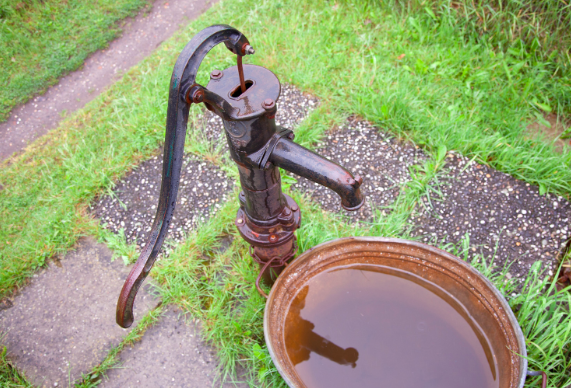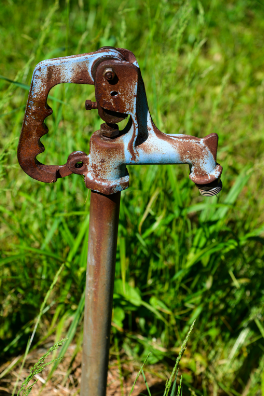Last Updated on November 25, 2022 by mdmtool
Pumps are devices that transfer fluids from one place to another. There are many different types of pumps, each with unique characteristics. Two main types of positive displacement pumps are reciprocating and rotary pumps. Both pump types work by displacing a certain amount of fluid with each stroke or rotation. Still, there are several differences between reciprocating and rotary pumps.
What Is Reciprocating Pump?

A reciprocating pump is a positive displacement pump that uses a piston to move fluid in a linear direction. The piston is driven by an electric motor or a gasoline engine.
What Is A Rotary Pump?

A rotary pump is a positive displacement pump that uses a rotating element to move fluid in a circular direction. The most common type of rotary pump is the centrifugal pump.
Difference Between Reciprocating And Rotary Pump
Size: Reciprocating pumps are available in many sizes, from small hand-operated to large industrial pumps. Rotary pumps are also available in a wide range of sizes but are usually smaller in size.
High-Pressure Liquids: Reciprocating pumps can handle high-pressure fluids better than rotary pumps.
Space: Reciprocating pumps require more space than rotary pumps.
Flow: Reciprocating pumps can provide a higher flow rate than rotary pumps.
Reciprocating pumps create flow with a piston that moves in a linear (back-and-forth) motion. This linear motion is converted into a rotating motion by a crankshaft.
On the other hand, rotary pumps generate flow with a rotor that turns inside a chamber. This rotating motion is converted into linear motion by gears or vanes.
Discharge Pumps: Reciprocating pumps can be used as both suction and discharge pumps. Rotary pumps can only be used as discharge pumps.
Priming: Rotary pumps do not need to be primed before they start working. Reciprocating pumps must be primed before they will start working.
Moving Part: Reciprocating pumps have more moving parts than rotary pumps.
Viscosities: Reciprocating pumps can handle higher viscosities than rotary pumps. Reciprocating pump is often used to transfer liquids with a high viscosity, such as oil or syrup.
Rotary pump is better suited for transferring low-viscosity liquids, such as water or gasoline.
Efficiency: Reciprocating pumps are less efficient than rotary pumps.
Maintenance: Reciprocating pumps require more maintenance than rotary pumps.
Cost: Reciprocating pumps are more expensive than rotary pumps.

Applications Of Reciprocating Pump
- Automotive-use pumps, such as those in gasoline engines
- Air compressors
- Many small pumps for domestic and industrial use, e.g., water, fuel, oil, etc.
Applications of Rotary pumps
- Fuel injection pumps in automotive engines
- Hydraulic pumps
- Many industrial applications, such as those involving chemicals and other fluids
Advantages Of Reciprocating Pump
- Can develop high pressures
- Good suction characteristics
- Simple construction
- Easy to maintain
Disadvantages Of Reciprocating Pump
- Can be noisy
- Vibration can be an issue
- Requires a larger footprint than a rotary pump
Advantages Of Rotary Pump

- can be quieter than reciprocating pumps
- Vibration is not typically an issue
Disadvantages Of Rotary Pump
- Lower pressures than reciprocating pumps
- poorer suction characteristics
- more complex construction than reciprocating pumps
- It can be more expensive than reciprocating pumps
Types Of Reciprocating Pumps
- Piston Pump: A reciprocating pump uses a piston to draw fluid into a cylinder and then push it out.
- Diaphragm Pump: A piston pump with a diaphragm instead of a solid piston. This type of pump is often used in applications where the fluid being pumped is corrosive or could damage a solid piston.
- Plunger Pump: Similar to a piston pump, but with a plunger instead of a piston. This type of pump is often used in high-pressure applications.
Types Of Rotary Pumps
- Gear Pump: The most common rotary pump uses two meshed gears to draw fluid into the pump and then push it out.
- Vane Pump: A rotary pump that uses vanes to draw fluid into the pump and then push it out.
- Screw Pump: A rotary pump that uses screws to draw fluid into the pump and then push it out.
- Lobe Pump: A rotary pump that uses two or more rotating lobes to draw fluid into the pump and then push it out.
FAQs
How Does A Rotary Pump Work?
A rotary pump draws fluid into the pump and then pushes it out. The liquid is drawn in by the rotating action of the pump.
How Does A Reciprocating Pump Work?
A reciprocating pump works by drawing fluid into a cylinder and then pushing it out. The liquid is drawn in by the reciprocating action of the piston.
What Are The Main Parts Of A Reciprocating Pump?
The main parts of a reciprocating pump are the piston, cylinder, connecting rod, and crankshaft.
What Are The Main Parts Of A Rotary Pump?
The main parts of a rotary pump are the gears, vanes, screws, or lobes.
What Is The Correction Head Of The Reciprocating Pump?
The correction head is the difference between the actual head and the theoretical head of the reciprocating pump. The correction head accounts for losses due to friction and other factors.
What Is The Efficiency Of A Reciprocating Pump?
The efficiency of a reciprocating pump is the ratio of the output power to the input power. The efficiency of a reciprocating pump is typically about 90%.
What Is The Efficiency Of A Rotary Pump?
The efficiency of a rotary pump is the ratio of the output power to the input power. The efficiency of a rotary pump is typically about 80%.
Which Type Of Rotary Pump Is The Most Pulsating Pump?
The most pulsating pump is the gear pump. The gear pump produces a pulsating flow of fluid due to the meshing of the gears.
Conclusion
Both types of pumps reciprocating and rotary, have their advantages and disadvantages, so it’s important to choose the right pump for your specific needs. A reciprocating pump is a good choice if you need a pump that can handle large volumes of fluid at high pressures. On the other hand, if you need a pump that can operate continuously without needing to stop and rest, then a rotary pump is a better option. Ultimately, deciding which type of pump to use depends on the specific application and your needs.





